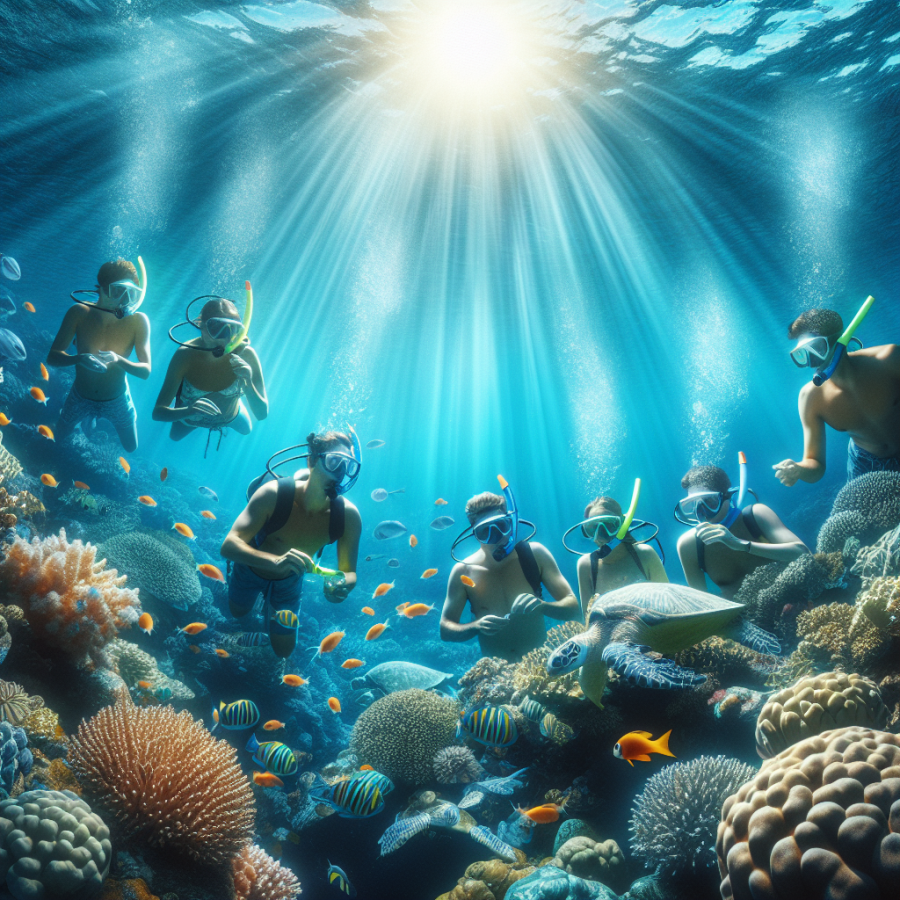The Aquatic Tapestry: Encountering Marine Life on a Snorkelling Adventure
Snorkelling presents a unique opportunity to immerse oneself in the serene underwater realm where the aquatic tapestry comes alive with a vibrant spectacle of marine biodiversity. The first splash into the clear, blue waters serves as an entryway into a world that thrives beneath the waves, revealing scenes straight out of a nature documentary that few are privileged to witness first-hand.
The initial encounter with marine life often takes place in the shallows, where sunlight pierces the water column, illuminating the colors and movements of various small fish and coral formations. It is here where one can appreciate the coral reef ecosystems, often referred to as the rainforests of the sea. Corals - the architects of this underwater landscape - build complex structures that support an incredible variety of life, from the tiniest of shrimps to the more elusive octopuses that make these reefs their home.
As the adventurer drifts with the current, the scenery transforms and deeper blue hues envelop the periphery. Schools of vibrantly patterned parrotfish can be seen grazing on coral, making a distinct crunching sound as they go about their business. Flashes of silver signal the presence of larger fish, such as barracuda and trevally, patrolling the open waters, while a gently waving bed of sea grass beneath might reveal the camouflaged forms of seahorses or the occasional sea turtle peacefully making its way past.
In some corners of the world, snorkelling also allows for encounters with larger marine creatures. The majestic manta rays glide with such grace that one can't help but feel a sense of awe as these gentle giants somersault and loop, feeding in the plankton-rich waters. The curious and intelligent dolphins, on the other hand, might playfully approach, their clicks and whistles a mysterious language that underscores the complexity of life beneath the waves.
Not to be outdone by the fauna, the underwater flora plays a critical role in the health and beauty of the ocean's landscape. Forests of kelp sway with the tides, providing shelter and nutrients to countless species and serving as an important indicator of the overall health of the marine environment.
As snorkelers explore further, they may come across the shadowy outlines of sunken artifacts and shipwrecks, each with its own story to tell.
Read also:
Blitzball: Unraveling the Thrills of Spira's Favorite Sport
Exploring the Depths: A Guide to Snorkelling Hotspots
Snorkelling presents an enchanting window into the underwater realm, a tantalizing glimpse at ecosystems teeming with life. Below are some of the world’s most celebrated snorkelling spots where the marvels of marine habitats are on full display for swimmers of all skill levels.
The Great Barrier Reef, Australia: The reef is home to an incomparable array of biodiversity, including over 1,500 species of fish, 411 types of hard coral, and a variety of other marine creatures. The Coral Sea's clear waters afford unparalleled visibility, making snorkelling here a transcendent experience. Sites like the Whitsunday Islands offer shallow waters perfect for beginners, while the Outer Reef teems with more advanced underwater topography.
Maui, Hawaii: Molokini Crater, a crescent-shaped, partially submerged volcanic crater, is Maui's snorkelling crown jewel. The crater's walls provide shelter from strong waves and currents, creating a safe haven with visibility often exceeding 100 feet. Snorkellers can observe over 250 marine species, many endemic to Hawai'i. The coral-laden crater floor is especially spectacular during morning snorkelling trips when the light is ideal.
The Red Sea, Egypt: The Red Sea's snorkelling reputation is built upon its warm waters, high-salinity levels for buoyancy, and astounding clarity. Sites like Ras Mohammed National Park and the Straits of Tiran offer vivid coral reefs that reach right up to the surface. The coral gardens of the Red Sea support an astonishing variety of fishes and invertebrates, and the proximity to shore allows for easy beach entries.
Belize Barrier Reef: As the largest barrier reef in the Northern Hemisphere, it houses the famous Great Blue Hole. Snorkellers can explore countless cayes and atolls. Shark Ray Alley in Hol Chan Marine Reserve is a unique site where snorkellers can encounter nurse sharks and southern stingrays up close.
The Yucatan Peninsula, Mexico: The clear, tranquil waters of the Caribbean Sea make for excellent snorkelling, with places like Cozumel and Akumal standing out. Snorkellers should not miss the cenotes—natural sinkholes with underground rivers—unique to the region, offering an otherworldly snorkelling experience amid stalactites and stalagmites.




